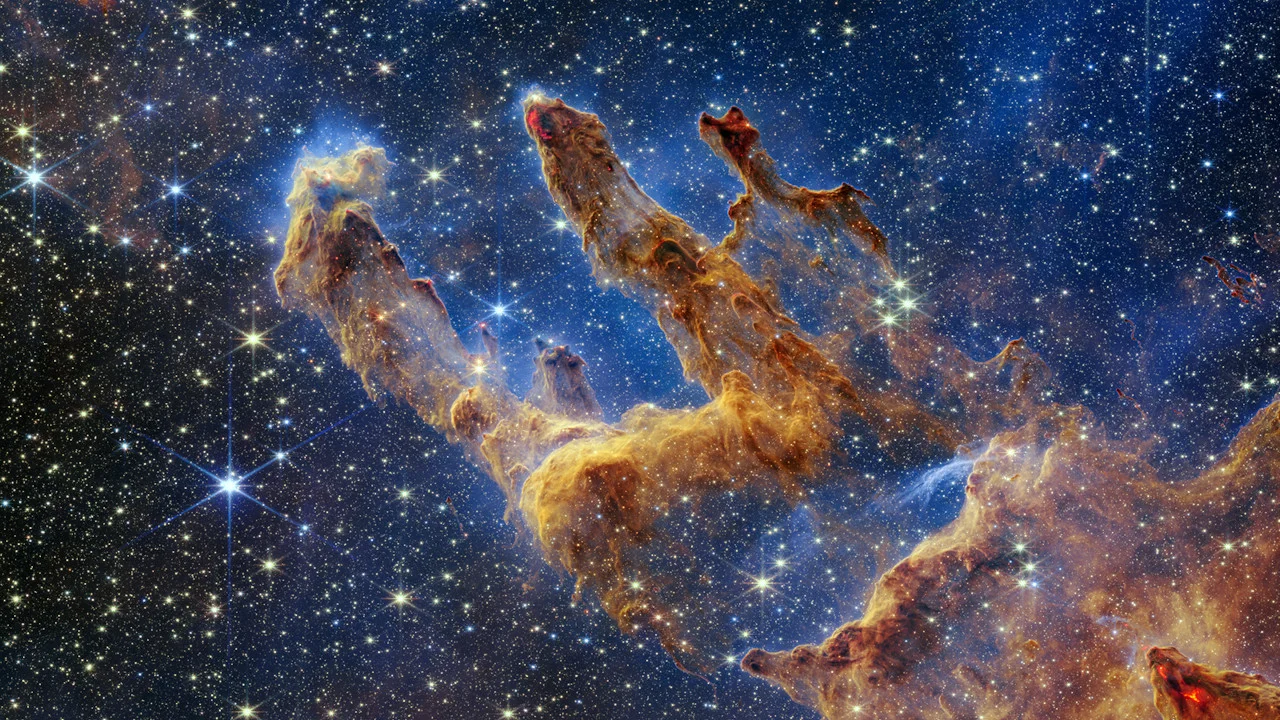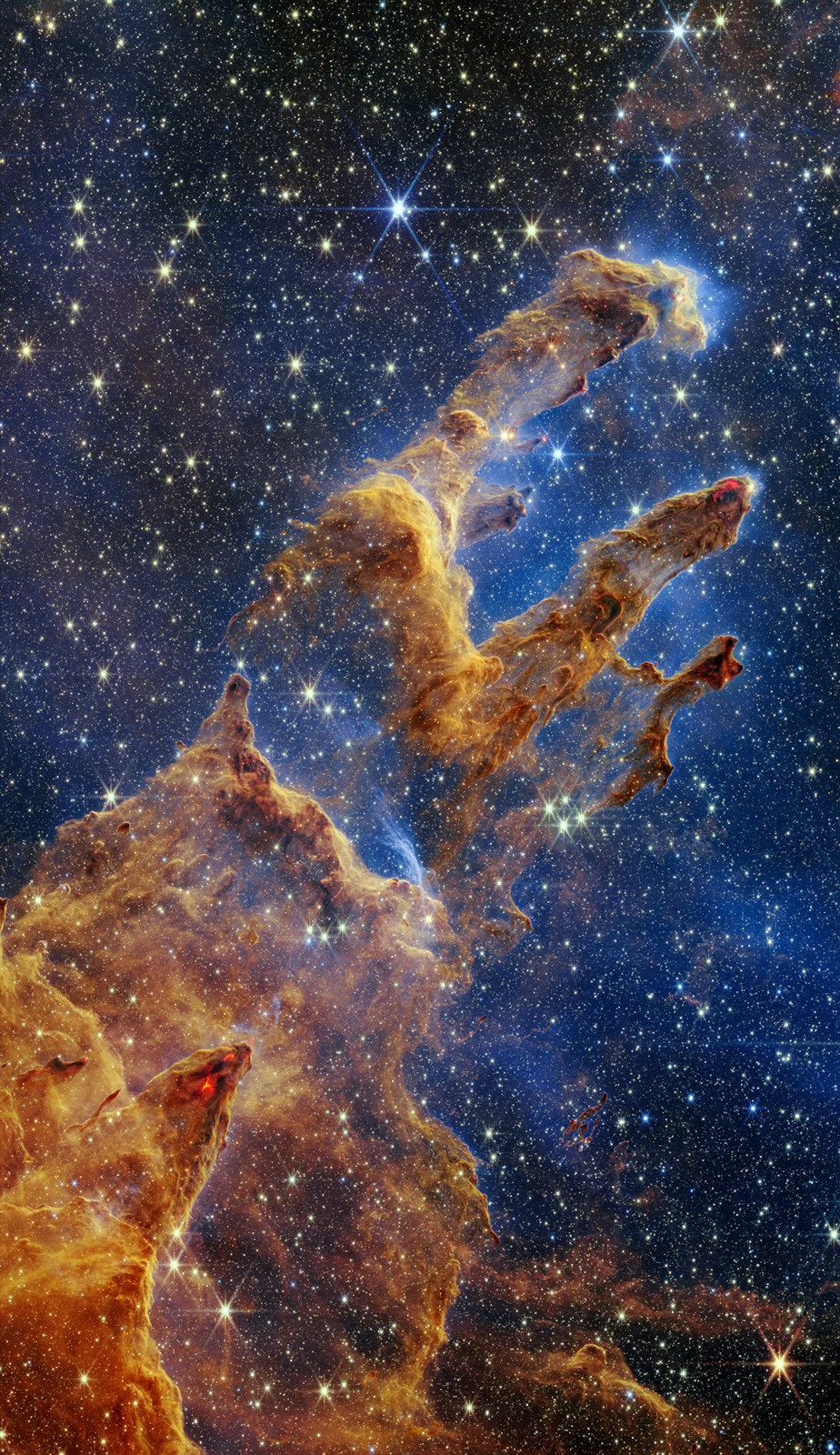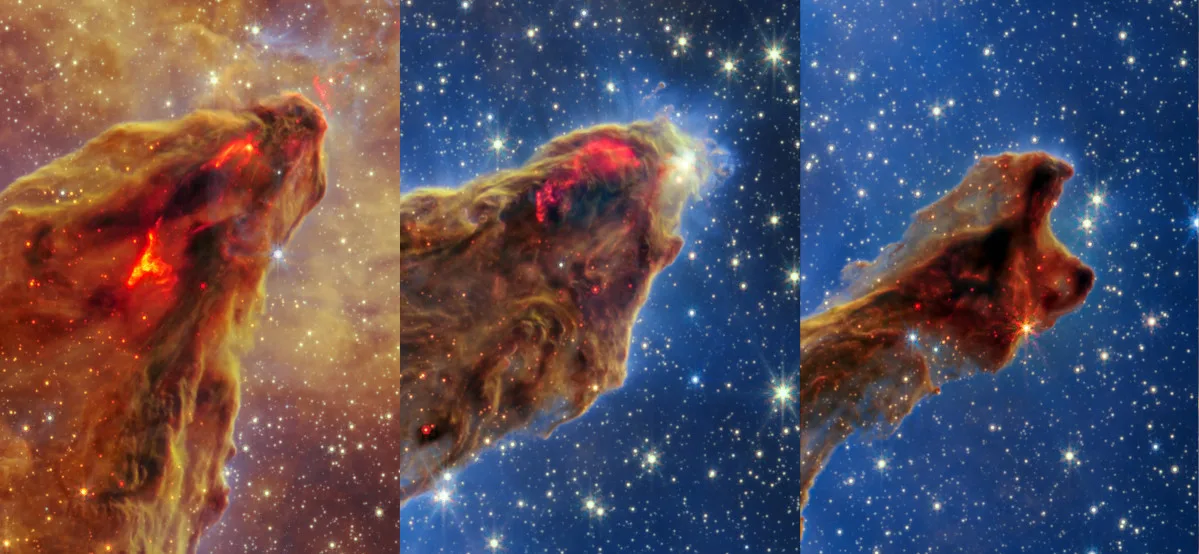
Marvel at the Pillars of Creation in new breathtaking view from Webb
Hubble made them famous, but Webb has now revealed them like we've never seen before.
Since the James Webb Space Telescope first came online, astronomers have been using it to tour the cosmos, viewing targets in our own solar system and the far reaches of the universe. Now, they have revisited another icon — The Pillars of Creation.
Discovered in 1995 by the Hubble Space Telescope, the Pillars of Creation are one of the most famous astronomy images ever produced. Composed of interstellar gas and dust, the Pillars are home to a multitude of stars, many of which are still in the process of forming.

This new near-infrared image of the Pillars of Creation was captured by the James Webb Space Telescope on August 14, 2022. The Pillars comprise just a tiny portion of the Eagle Nebula, located around 6,500 light years from Earth. This image shows a region of space roughly 8 light-years across. Credits: NASA, ESA, CSA, STScI; Joseph DePasquale (STScI), Anton M. Koekemoer (STScI), Alyssa Pagan (STScI)
"Newly formed stars are the scene-stealers in this image from Webb's Near-Infrared Camera (NIRCam)," NASA said. "These are the bright red orbs that typically have diffraction spikes and lie outside one of the dusty pillars. When knots with sufficient mass form within the pillars of gas and dust, they begin to collapse under their own gravity, slowly heat up, and eventually form new stars."
While Hubble's views caught hints of these newly-forming stars, their locations stand out brightly in crimson red in Webb's new look. According to NASA, this colour results from supersonic jets of energetic particles that shoot out of these young stars and the bow shocks produced by these jets as they plough through the dust and gas of the nebula.

The bright red regions in these sections of the Pillars of Creation are due to Webb picking up the emissions from energized hydrogen molecules. Credits: NASA, ESA, CSA, STScI; Joseph DePasquale (STScI), Anton M. Koekemoer (STScI), Alyssa Pagan (STScI)
Another remarkable thing about this new image is that it lacks one feature present in nearly every other Webb image we've seen. There are no galaxies visible in the background!
According to the Space Telescope Science Institute: "Although it may appear that near-infrared light has allowed Webb to 'pierce through' the background to reveal great cosmic distances beyond the pillars, the interstellar medium stands in the way, like a drawn curtain. This is also the reason why there are no distant galaxies in this view. This translucent layer of gas blocks our view of the deeper universe. Plus, dust is lit up by the collective light from the packed 'party' of stars that have burst free from the pillars. It's like standing in a well-lit room looking out a window – the interior light reflects on the pane, obscuring the scene outside and, in turn, illuminating the activity at the party inside."











